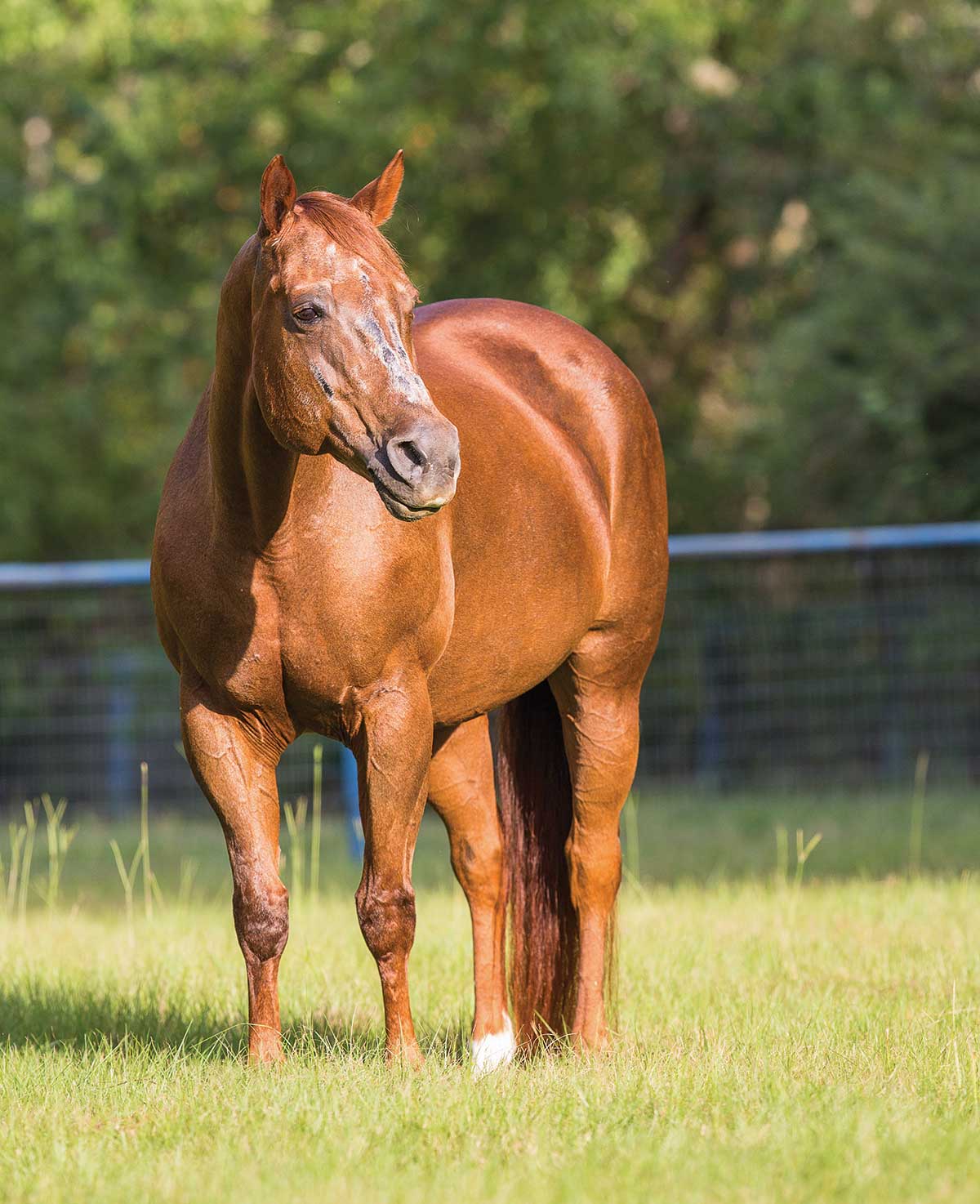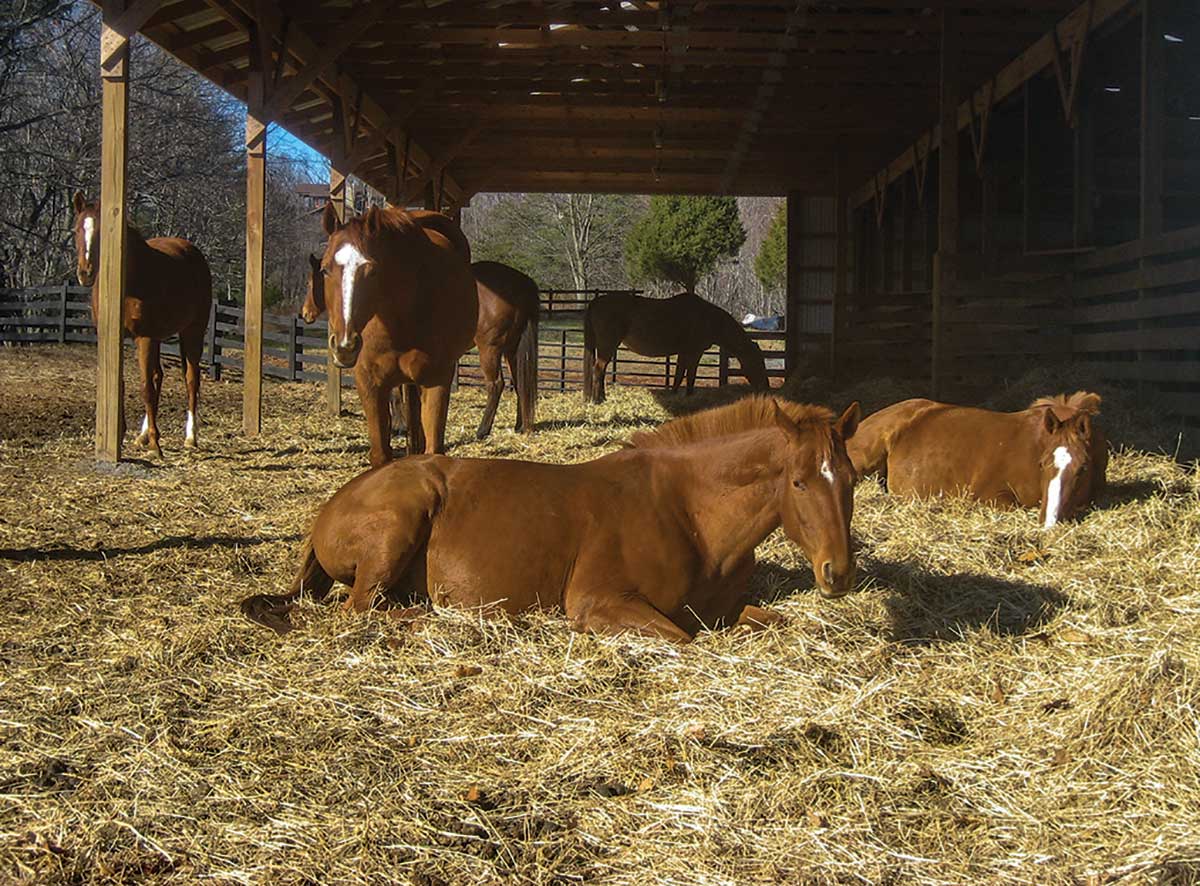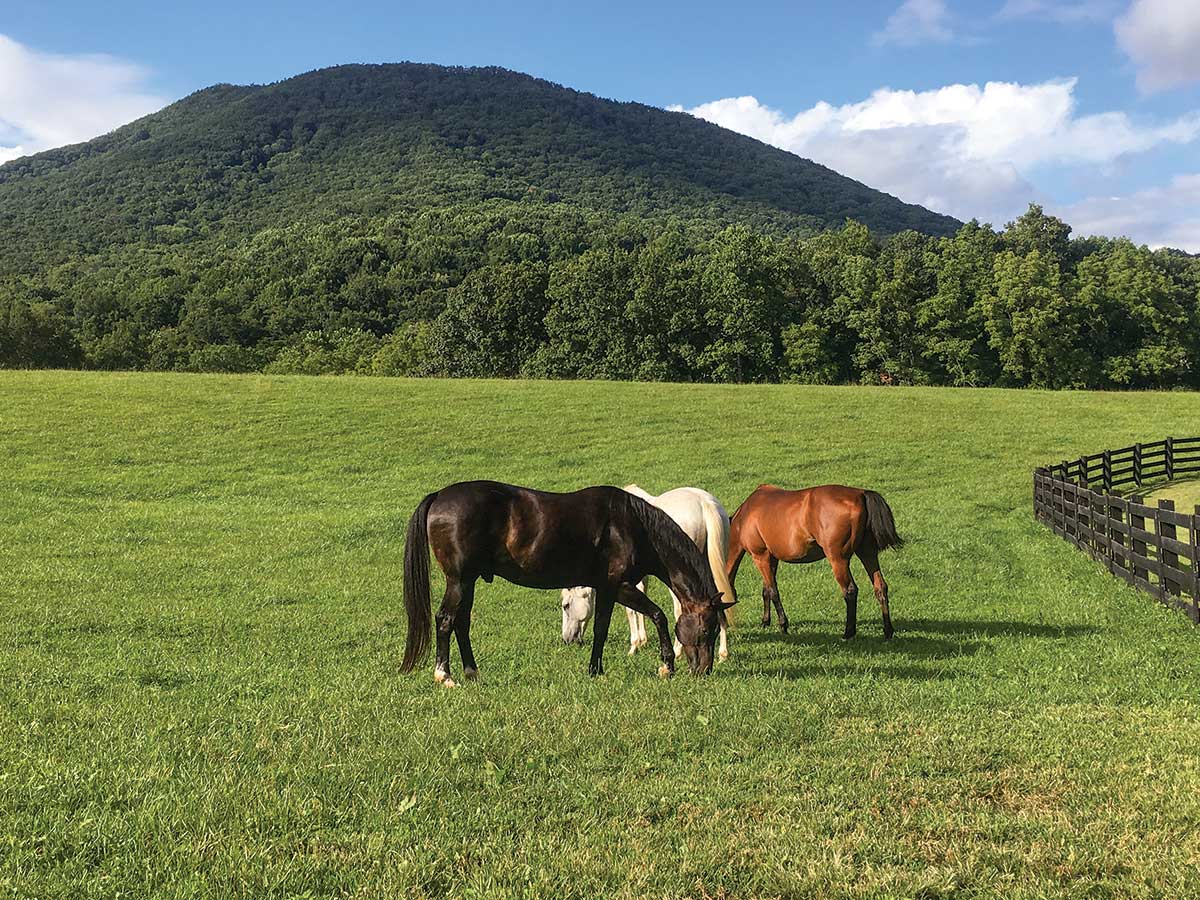
Beau was performing at a high level. His owner, Mary Jean Geroulo, boarded him at a top-notch mid-city facility where care of competition horses was excellent. Time went by. Age and health problems sidelined Beau. It was time for him to retire. Geroulo relocated the big bay gelding to a facility in the country that caters to the specific needs of retired horses. Now 27, Beau is happy. Geroulo rests easy knowing he’s content, safe, and well cared for.
You might one day need to find retirement quarters for your own senior horse. He’s carried you through years of competition, down miles of trails, and through seasons of life. When his active riding career comes to an end, what’s the next step? We asked two senior-care providers for their best tips to find the right retirement facility for your horse. Here’s their step-by-step guide.
Step 1: Determine Your Horse’s Needs
Older horses often have health issues and require daily medications. For a typical boarding facility, this might be outside the bounds of everyday care. But for a retirement facility, this is an essential part of keeping those horses healthy.
Roseanna McMillan runs White Rock Manor in Lexington, Virginia, with her husband, James. Before you choose a facility, McMillan says, consider your horse’s abilities and needs. Is he pasture-sound? Does he need to be blanketed in the winter? Make sure your chosen facility can provide top care tailored to your horse’s particular needs.
Dawn Johnson owns and operates Cottonwood Stables, a retirement facility in Crockett, Texas. She cares for several horses with pituitary pars intermedia dysfunction (PPID) and anhidrosis—both require careful management, particularly during hot Texas summers. Other horses have dental diseases that require close observation and other issues that need a watchful eye. Johnson’s team pays close attention to the health of their charges, and if one is no longer happy or healthy, they’ll work to improve his conditions. But Johnson also recognizes when it’s time to have a difficult conversation with the owners.
“If I can’t make a horse better and make him comfortable, and if he doesn’t seem happy or healthy, then I’ll contact the owner and have a conversation about humanely euthanizing the horse,” Johnson says.
Johnson’s facility—25-stall barn, outdoor arena (converted to turnout), large pasture, and several smaller pastures—offers a different kind of atmosphere better suited to the slower tempo of an older horse’s life. Cottonwood Stables residents spend the majority of their time on pasture in groups of two and three horses, perfect for most senior horses that could struggle in a larger herd.
“One of their biggest problems my horse owners wanted to address from previous lodging was group turnout,” she says. “Their horse was the older one, and he was at the bottom of the heap. He wasn’t getting food, so he was losing weight and just didn’t look good because he wasn’t getting daily care. Our horses here are handled every day. We are out there feeding them, grooming them, and cleaning their feet. And when it comes time for feeding, everybody gets fed separately. We don’t just throw a bunch of food out there.”

Step 2: Do Your Research—and Be Picky!
“Websites and brochures can look fantastic, but you need to see a facility for yourself,” McMillan cautions. “It’s worth doing your homework, rather than sending your horse somewhere that could potentially be bad for him.”
Johnson recommends looking at the other horses boarded at your horse’s potential new home. Are their feet maintained? Are they healthy and happy-looking? These are good signs your horse will also thrive in this atmosphere. Pay attention to the same things you look for in a good boarding establishment: competency of care, experienced staff, good references, and a positive track record.
“Are the stalls clean? Are the water buckets full? How safe is the barn? How safe is the fencing?” Johnson suggests you ask. “What do the horses look like? Look for cuts and unexpected limping. Is this someplace you’d want to live for the rest of your life?”
McMillan advises asking specific, clarifying questions of the facility owner or manager. For example, if you’re told there are 400 acres of turnout pasture, ask if your horse’s specific turnout needs will be met. If he’ll be turned out with a large herd and left to fend for himself, and that situation doesn’t suit his personality, then the 400 acres hardly matter.
Also consider location, says McMillan. If you live in a metropolitan area, you might be hard-pressed to find a facility with adequate land to allow your horse freedom to move around most of the day. If you live in a very cold or very warm climate, your older horse may struggle during the extreme temperatures that he previously handled with ease.

Step 3: Select the Right Atmosphere
Talk to other boarders to ensure that you’re comfortable with the facility’s atmosphere. Johnson’s Cottonwood Stables is a retirement haven for 30 performance horses that can no longer be ridden; many are geriatric. Most of the owners of Johnson’s charges chose her facility as a long-term residence for their former show horses.
“When a performance horse reaches an age where he’s living with health or soundness issues and he can no longer do his job, the owner may look around at the training barn and think, is this where I want my horse to spend the rest of his life?” Johnson says. “The horse might spend four hours a day turned out and the rest of the time in a stall. And unless the owner is there to take care of him, the horse might not get individualized attention that a senior horse can require.”
Johnson maintains that a horse used to a life of strenuous competition is accustomed to being pampered and kept in a stall, so full turnout isn’t always the best option, at least not to begin his retirement. Complete turnout could be a shock to his system, she says. Consider how your horse has been housed throughout his life when planning for retirement, and expect an adjustment period. In the meantime, find a way to keep him moving.
“I’ve learned from working with veterinarians that older horses with arthritis and other issues are better out and about, moving instead of standing in a stall,” Johnson advises.
McMillan agrees, noting that a typical show horse might spend 12 or 14 hours without moving freely. But for an older horse, inactivity can cause stiffness and stocking up.
Step 4: Look for Routine
Having a regular routine boosts your senior horse’s health and comfort level. “Each morning when I go to feed at 7:00, they’re all taking their morning nap in the sun to warm their bodies up,” says McMillan. “They get their grain and their hay, and then they wander out to the waterer, which is a really great chance [for me] to observe each horse and see that they’re all healthy and traveling in a group.”
Cottonwood Stables’ horses have standing farrier appointments every six weeks. A veterinarian vaccinates and floats all residents’ teeth on a schedule, checking for dental issues and heading them off early when possible, thanks to this routine.
“We recognize the signs [of not getting enough nutrition] and can do something before anything reaches a critical level,” Johnson says. “Every horse has his own bucket that’s color-coded, and each horse is on a different medication, supplement, and diet. We always check to make sure the horses are eating—we don’t just feed them and walk away.”
Your Retirement Benefit
You might be considering keeping your retired mount on your own property. While that’s a viable choice, consider the amount of care involved.
Roseanna McMillan, who developed White Rock Manor in the late 1980s, notes that entrusting your older horse into the care of knowledgeable and committed professionals allows you more flexibility.
“When a horse comes to me, his care and well-being are paramount,” McMillan says. “Having a retired horse at home ties you down. If you want to go away for a week, you have to make arrangements for someone to stay on your place and provide the level of care your horse needs and expects. I don’t think having a horse-sitter check on your horse twice a day is sufficient, especially an older horse.”
Step 5: Budget for Costs
As you narrow down your choices, consider cost of care. Cottonwood Stables charges a flat rate for all care—including medical maintenance, blanketing, stall cleaning, bathing and grooming, specialized feeding, and more. Each horse’s individual shoeing and veterinary costs are extra.
“There’s no question: horse ownership is not a cheap pursuit, but we try to keep our fees down,” Johnson says.
In addition to monthly board fees, consider and clearly communicate with your horse’s caretaker the amount of extraordinary effort you’re willing to pay for when it comes to veterinary procedures and care. These costs add up and can compromise your horse’s well being for the long term.
“If your horse colics, do you want the veterinarian to treat him with surgery or other more extreme methods, or is euthanasia feasible?” McMillan asks. “Is going to the hospital something you want for the horse? Your horse’s caretaker should know what you’d want in an emergency. Having those conversations ahead of time helps the owner prepare for the possibilities, and the barn manager to know what everyone’s wishes are.”

Step 6: Ask for Updates
After you’ve moved your horse into your chosen retirement facility, establish reasonable communication protocols with the facility owner or manager. Then ask for regular updates on your horse’s condition.
“I joke with my owners that I’m running a summer camp,” McMillan says with a smile. “They might not get a letter from their camper, but a photograph and an update from the retirement facility isn’t unreasonable to expect. It’ll help you keep an eye on your horse’s body condition and feet. Plus, this is a horse that’s taken care of you, and you love him enough that you’re giving him a comfortable retirement. You don’t want to send your horse somewhere and then find out six months later he’s the lowest one in a herd of 30 and isn’t allowed to get to the water trough without getting beaten up. That’s why it’s so important to research where you send your horse and have good communication.”
Geroulo chose Cottonwood Stables, located 2½ hours away from her home, because the horses were turned out in small groups in large fields with access to grass and shade trees. She valued Johnson’s horse-care experience and attention to each horse’s condition, and she appreciated Johnson’s clear communication regarding her horse’s health.
“I cried and cried when I left him with Dawn,” Geroulo admits. “Beau was with me through difficult jobs, through moves, going to law school, being treated for cancer. To send him away, it felt like I was giving up on him. But it became obvious quickly that he’s really happy there.”
Geroulo visits Beau several times a year; she’s relieved that the elderly gelding is thriving. She also feels reassured by the weekly emails and photos she receives from Johnson about her horse.
“These horses that have gone to shows with us and carried us around most of their lives, living in barns because it’s convenient for us,” Geroulo says. “I think they deserve the best that we can give them when they retire. That, to me, is a place where they can go out on grass with the sun on their back, with the best care we can possibly give them.”






